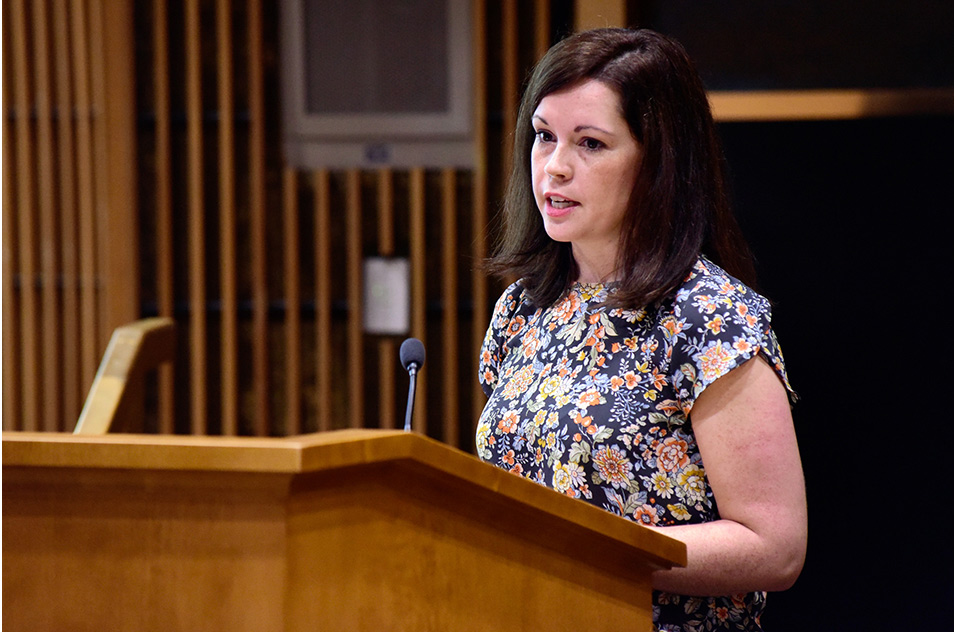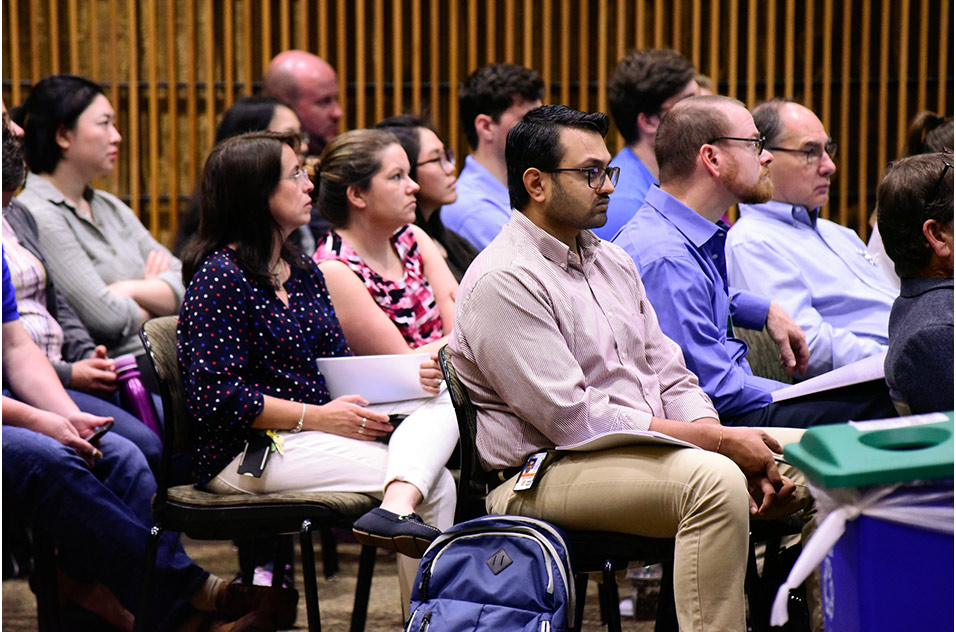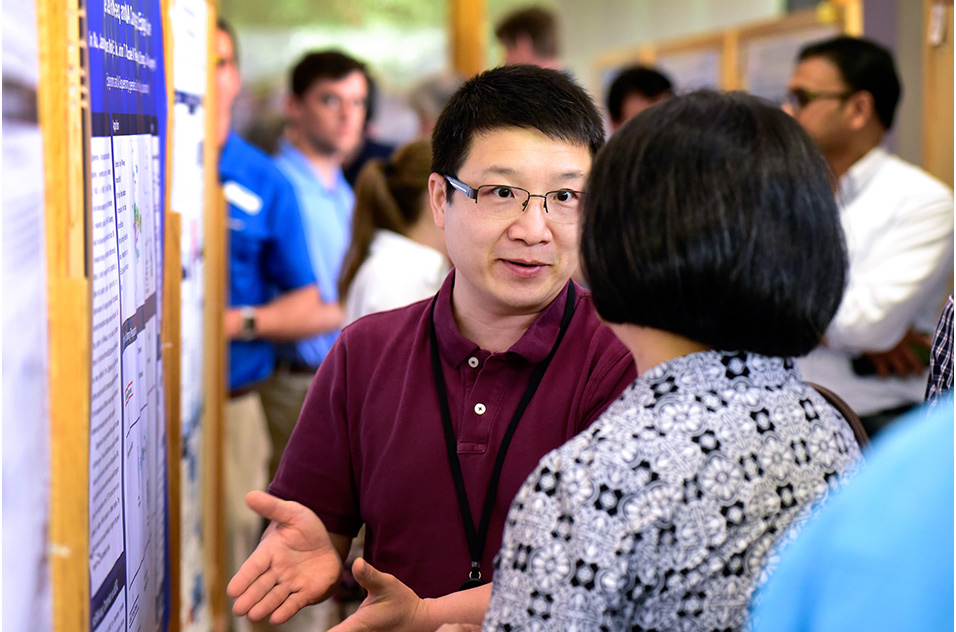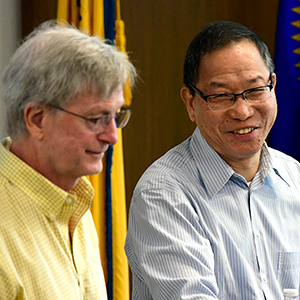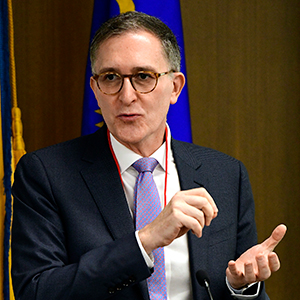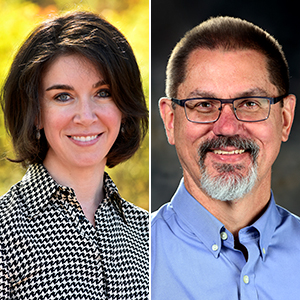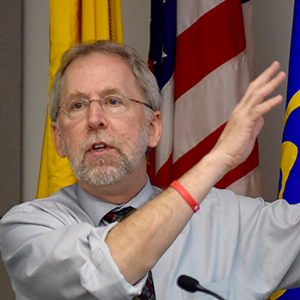Genomics had its day in the limelight as NIEHS scientists gathered for academic talks and poster presentations that noted recent advances in the fast-moving field. The May 16 event, which featured a keynote presentation from NIEHS researcher Scott Williams, Ph.D., covered a wide array of technology updates and scientific discoveries.
The syposium featured a record 96 posters, which overflowed from Rodbell Auditorium into the lobby, by researchers and trainees in the NIEHS Division of Intramural Research and Clinical Research Branch, the National Toxicology Program (NTP), the Environmental Protection Agency, and industry representatives.
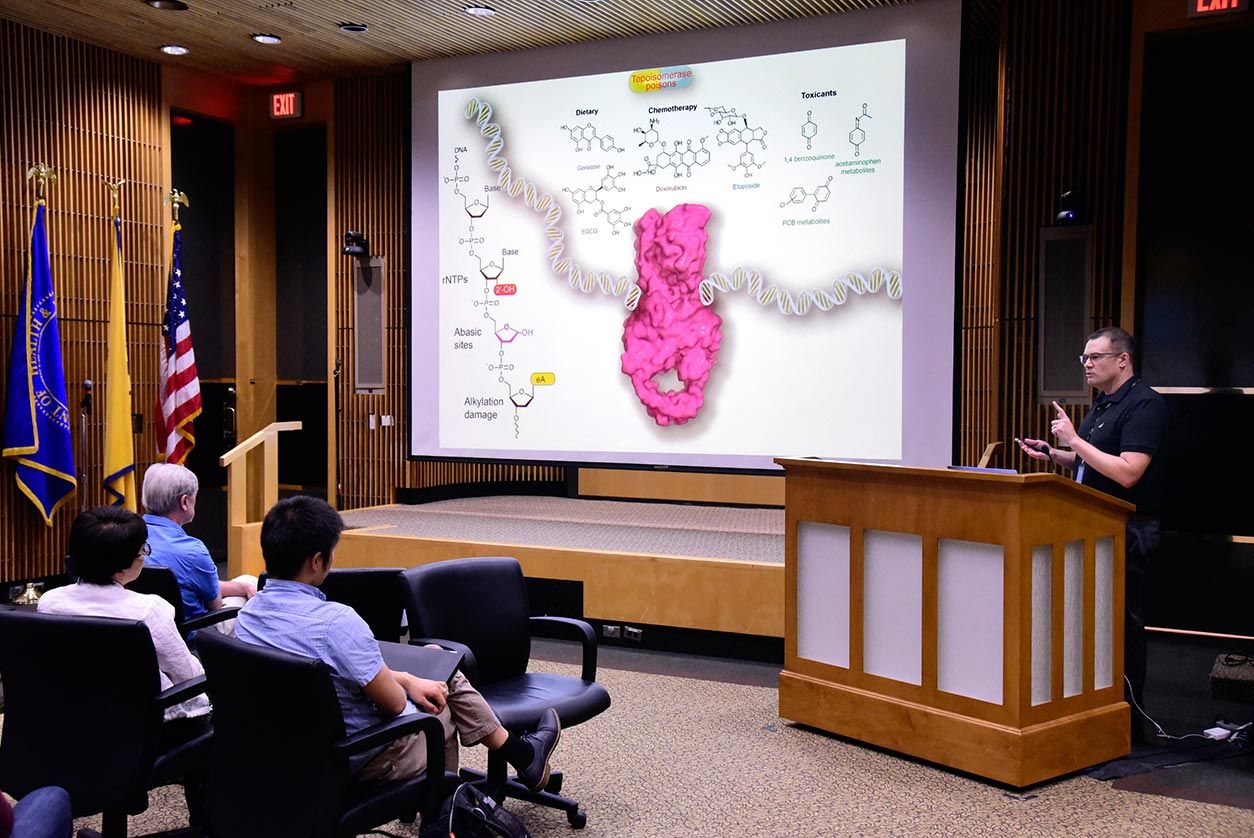 In his keynote, Williams explained how environmental exposures to DNA-damaging radiation and chemotherapeutic drugs can create DNA strand breaks with different chemistries on their ends. (Photo courtesy of Steve McCaw)
In his keynote, Williams explained how environmental exposures to DNA-damaging radiation and chemotherapeutic drugs can create DNA strand breaks with different chemistries on their ends. (Photo courtesy of Steve McCaw)“It was cool to see different genomics functions showcased, and to learn about different teams I could reach out to for help answering questions that have come up in my research,” said Dahea You, Ph.D., Pharm.D., a first-time attendee and first-year postdoc in the NIEHS Biomolecular Screening Branch. “I thought it was small enough that you could easily interact with people, but not so small that you were limited in the amount of information you gained.”
The highest in high-tech
Lead organizer Kevin Gerrish, Ph.D., director of the NIEHS Molecular Genomics Core Laboratory, previewed the day’s offerings. “My hope is that there is something here for everyone,” he said. “We have a lot of new technologies that are represented in these presentations, including single cell analysis and high-throughput screening, using model systems ranging from yeast to humans, covering topics like development, DNA repair, toxicology, stem cells, and carcinogenesis, just to name a few.”
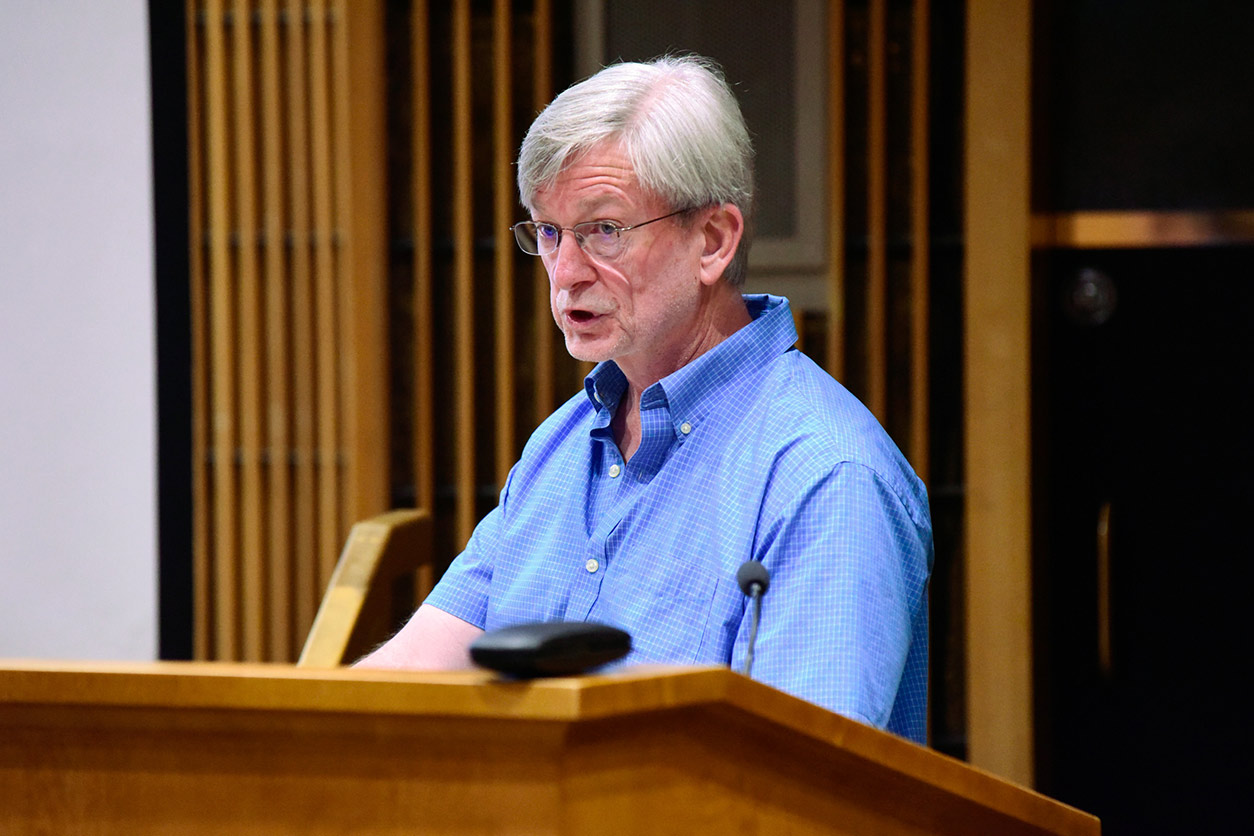 Gerrish said the goals of Genomics Day were to promote discussion of genomics experiments performed at NIEHS, advances in genomic methods and software technology, and bioinformatics resources available to NIEHS investigators. (Photo courtesy of Steve McCaw)
Gerrish said the goals of Genomics Day were to promote discussion of genomics experiments performed at NIEHS, advances in genomic methods and software technology, and bioinformatics resources available to NIEHS investigators. (Photo courtesy of Steve McCaw)Greg Solomon, manager of the Epigenomics Core Laboratory, and Jason Li, Ph.D., director of the Integrative Bioinformatics Support Group, described the services they provide, how to access their resources, and the latest updates to their technology portfolio.
The Epigenomics Core recently added a new high-throughput sequencing machine called the NovaSeq 6000 that has upped the number of reads — a measure of how much of the genome is sequenced at a time — from 400 million to 20 billion per run.
“We are adding a new technique or modifying an existing technique every other month,” Solomon told the audience. “We are very interested in looking to the future, so if you have ideas of things you want to do, get up with us.”
Li explained that his group offers bioinformatics services that can assist every step of the research process, including project conception, experimental design, data analysis, data interpretation, and project conclusions. Scientists in his group provide education and training opportunities for NIEHS staff throughout the year, such as the Biostatistics and Bioinformatics Short Courses series, which begins again in June.
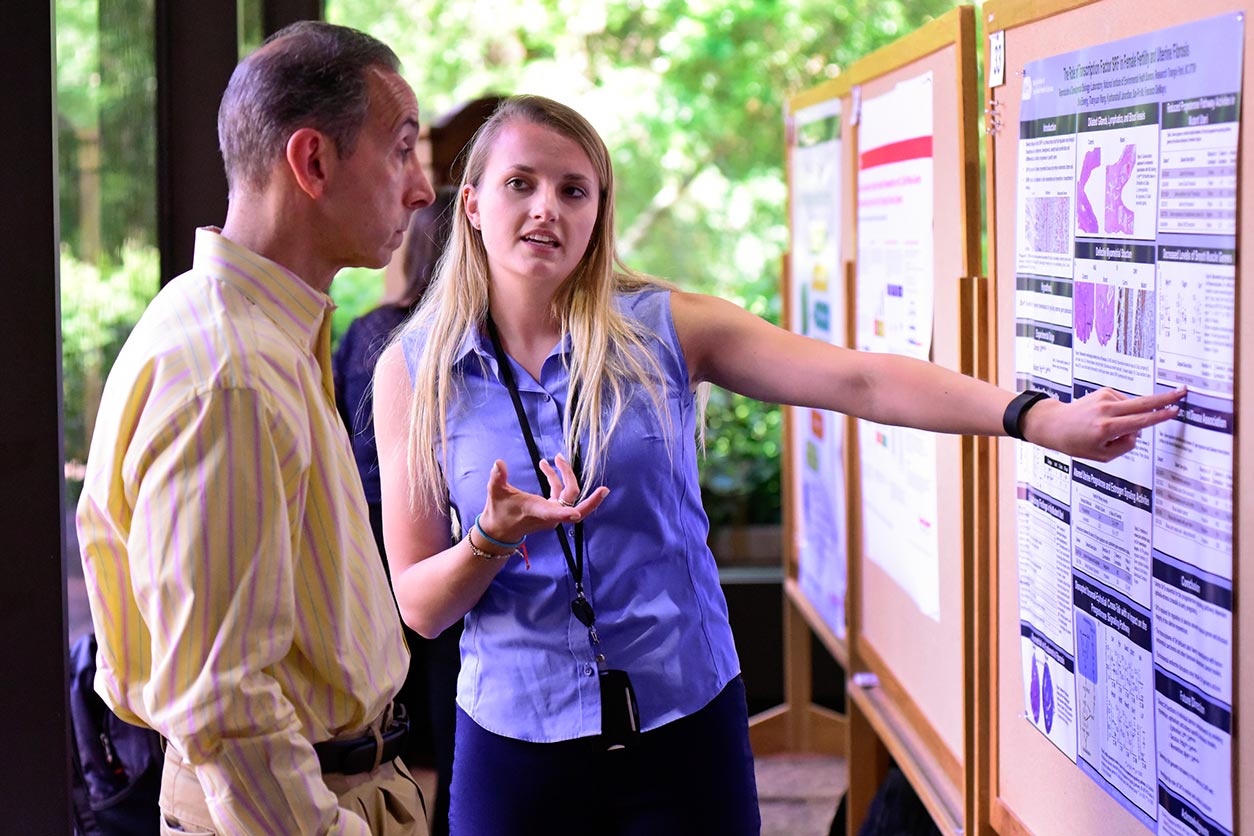 Zeldin listened to Olivia Emery, a postbaccalaureate fellow in the Reproductive and Developmental Biology Laboratory, present her poster “The Role of Transcription Factor SRF in Female Fertility and Uterine Fibrosis.” (Photo courtesy of Steve McCaw)
Zeldin listened to Olivia Emery, a postbaccalaureate fellow in the Reproductive and Developmental Biology Laboratory, present her poster “The Role of Transcription Factor SRF in Female Fertility and Uterine Fibrosis.” (Photo courtesy of Steve McCaw)Spotlight on DNA repair
“It was really nice to listen to the talks this morning and get a broader feeling for what is going on at the institute,” Williams said at the beginning of his keynote. As deputy chief of the Genome Integrity and Structural Biology Laboratory, he studies DNA repair pathways, and specifically, the molecular mechanisms of DNA repair.
Williams said that a critical type of DNA damage called a DNA-protein crosslink can act like a ticking time bomb that, if not disabled, could trigger cells to die off or turn cancerous. His lab has discovered that these crosslinks can be repaired by two special proteins called TDP2 and ZATT.
With the help of the Protein Expression Core Facility and the Flow Cytometry Center, his team has recently mapped the exact spots where these two proteins interact with each other. Such maps could help scientists design therapies that could undo the damage from common chemotherapy drugs.
(Marla Broadfoot, Ph.D., is a contract writer for the NIEHS Office of Communications and Public Liaison.)





